Did you know that lambs lettuce, also known as corn salad or mache, is a salad green that can be easily grown in your own garden? This small, dark green leafy vegetable not only adds a delightful nutty flavor to your salads but also brings surprising health benefits to your plate. By cultivating lambs lettuce in your garden, you can enjoy the freshness and flavor of this versatile green throughout the year.
If you’re looking to enhance the taste and nutritional value of your salads, growing lambs lettuce is a fantastic option. Its delicate leaves provide a unique texture and an earthy, nutty taste that pairs well with a variety of ingredients. Plus, lambs lettuce is packed with vitamins, antioxidants, and omega-3 fatty acids, making it a superfood for your health.
In this article, I will guide you through the process of growing lambs lettuce in your garden, from sowing the seeds to caring for the plants and harvesting the leaves. You’ll discover just how easy and rewarding it can be to cultivate this wonderful green in your own backyard.
Key Takeaways:
- Growing lambs lettuce in your garden allows you to enjoy fresh and flavorful greens for your salads.
- Lambs lettuce is a low-maintenance plant that thrives in cooler temperatures and retains its succulent leaves.
- Sowing lambs lettuce seeds is a simple process, and the plants can be grown in open soil, pots, or raised beds.
- Caring for lambs lettuce involves keeping the soil moist and protecting the plants from pests like slugs and aphids.
- Lambs lettuce can be harvested by removing individual leaves or by harvesting the whole rosette, providing a continual supply of fresh greens.
What is Lambs Lettuce and Why Should You Grow It?
Lambs lettuce, also known as corn salad or mache, is a variety of salad green with small, dark green leaves and a slightly nutty flavor. It is a hardy plant that thrives in cooler temperatures, making it a great addition to your winter salads. Unlike other salad greens that can become bitter in the cold, lambs lettuce maintains its succulent and flavorsome leaves.
“Lambs lettuce is a versatile and nutritious green that adds a fresh and vibrant touch to any dish.”
Besides its delicious taste, lambs lettuce also boasts surprising health benefits. It is a good source of vitamins and antioxidants, making it a valuable addition to a balanced diet. By growing lambs lettuce in your own garden, you can have access to this versatile and nutritious green all year round, ensuring a fresh and flavorful supply for your salads.
Experience the delight of cultivating lambs lettuce in your garden and enjoy the benefits of its nutty flavor, hardiness, and availability even during the winter months. Let’s explore how to grow lambs lettuce and make the most of this remarkable salad green.
The Health Benefits of Lambs Lettuce
| Nutrient | Health Benefits |
|---|---|
| Vitamin C | Boosts the immune system and supports collagen production |
| Folic Acid | Plays a vital role in cell growth and development, especially during pregnancy |
| Omega-3 Fatty Acids | Supports heart health and helps reduce inflammation |
| Antioxidants | Protects against oxidative stress and promotes overall well-being |
| Vitamin B9 | Plays a crucial role in DNA synthesis and red blood cell formation |
How to Grow Lambs Lettuce in Your Garden
Growing lambs lettuce in your garden is a simple and rewarding process. With just a few steps, you can cultivate this delightful salad green and enjoy its fresh flavors in your home. Follow this guide to successfully grow lambs lettuce in your garden.
1. Sowing Lambs Lettuce Seeds
To begin, sow lambs lettuce seeds on moist soil or compost from spring to summer. Ensure the soil is well-drained and free from any clumps or debris. Lightly cover the seeds with a thin layer of compost to protect them and promote germination.
If you live in an area with colder temperatures, consider using a cloche to provide extra warmth and protection for the seeds. The cloche acts as a mini-greenhouse, encouraging faster germination and growth.
2. Continual Crop
Unlike other salad greens, lambs lettuce doesn’t require thinning. This means you don’t have to remove any seedlings to allow others to grow. Instead, let the plants grow close together and harvest the leaves as needed.
To ensure a continual crop of lambs lettuce, sow new seeds every two weeks. This staggered planting will ensure a steady supply of fresh greens throughout the growing season.
3. Suitable Growing Locations
Lambs lettuce can be grown in various locations, depending on your space and preferences. It thrives in open soil, making it an excellent choice for traditional garden beds. However, if you have a small garden or limited space, you can also grow lambs lettuce in pots or raised beds. Additionally, lambs lettuce can be planted as a catch crop in cleared areas, making use of any available space.
4. Maintenance and Care
Lambs lettuce requires consistent moisture to thrive, so make sure to keep the soil moist throughout the growing season. Water the plants regularly, especially during dry spells or in hot weather.
It’s also essential to keep the area around the lambs lettuce plants free from weeds. Regularly remove any weeds that might compete for nutrients and space.
5. Harvesting Lambs Lettuce
Lambs lettuce can be harvested as individual leaves or as a whole rosette. To harvest individual leaves, simply pick the outer leaves as needed, allowing the inner leaves to continue growing. If you prefer harvesting the entire rosette, cut the plant at the base using scissors or secateurs.
Remember to harvest only what you need to avoid waste and continue to enjoy fresh lambs lettuce throughout the growing season.
Growing lambs lettuce in your garden is a rewarding experience. With these simple steps, you can enjoy a continual crop of fresh and flavorful lambs lettuce throughout the year. Experiment with different growing locations and enjoy the process of cultivating this versatile salad green.
Where to Grow Lambs Lettuce
Lambs lettuce is a versatile crop that can be grown in various locations, including open soil, pots, raised beds, or even as a catch crop in cleared areas. It’s important to provide enough space for lambs lettuce to grow, as it is a slow-growing crop. Whether you have a small garden or a larger space, you can find a suitable spot to cultivate this delicious crop. Best of all, lambs lettuce requires relatively little maintenance and can thrive in different growing conditions.
If you have open soil in your garden, you can sow lambs lettuce directly into the ground. Just make sure the soil is well-prepared and rich in organic matter to provide the necessary nutrients. This method allows the roots to establish themselves and promotes healthy growth.
If you have limited space in your garden or prefer container gardening, you can grow lambs lettuce in pots. Choose deep pots to accommodate root development and fill them with a well-draining potting mix. Place the pots in a sunny spot and water regularly to keep the soil moist.
Raised beds are another excellent option for growing lambs lettuce, especially if you want to control the quality of the soil. Raised beds offer improved drainage and allow for better control of weeds and pests. Fill the raised bed with a mixture of compost and well-draining soil, and sow the lambs lettuce seeds evenly across the surface.
If you have cleared areas in your garden after harvesting other crops, you can use lambs lettuce as a catch crop. Sow the seeds in these areas to maximize the space and optimize your garden’s productivity. Lambs lettuce can quickly fill in these gaps and provide you with a delicious crop while the main crops are still growing.
Pros and Cons of Growing Lambs Lettuce
| Location | Pros | Cons |
|---|---|---|
| Open soil |
|
|
| Pots |
|
|
| Raised beds |
|
|
| Catch crop |
|
|
How to Sow Lambs Lettuce Seeds
Sowing lambs lettuce seeds is a straightforward process. To ensure successful germination and growth, follow these simple steps:
- Prepare the soil or compost: Start by making sure the soil or compost is moist and well-prepared. This provides a favorable environment for the lambs lettuce seeds to thrive.
- Sow the seeds: Carefully scatter the lambs lettuce seeds onto the surface of the moist soil or compost. Try to distribute them evenly to ensure uniform growth.
- Layer of compost: Lightly cover the seeds with a fine layer of compost. This protects the seeds and provides the necessary nutrients for germination.
- Keep it moist: Maintaining moisture is essential for germination. Water the surface of the compost as needed to keep it consistently moist. Avoid overwatering, as it may lead to rotting.
- Optional: Use cloches for faster growth: Although not necessary, using cloches can aid in germination and speed up the growth of lambs lettuce. Cloches create a microclimate that encourages seedlings to emerge sooner.
Lambs lettuce is a hardy plant that can grow well without much protection. However, if you choose to use cloches, make sure to monitor the moisture levels beneath them to prevent excessive dryness.
The seeds should begin to germinate within two to three weeks. Once the seedlings have grown, thin them out to provide sufficient space for each plant to develop. Thinning is necessary to avoid overcrowding, allowing the lambs lettuce to reach its full potential.
Pro Tip:
When sowing lambs lettuce seeds, remember to label or mark the area where you sowed them. This helps you keep track of their progress and prevents accidental disturbance during subsequent garden maintenance tasks.
Following these steps will set you on the path to a successful lambs lettuce farm, ensuring a bountiful harvest of fresh and nutritious greens.
Caring for Lambs Lettuce
Caring for lambs lettuce is relatively easy. By following a few simple steps, you can ensure the healthy growth and abundant harvest of this delicious salad green.
Moist Soil
One of the key aspects of caring for lambs lettuce is maintaining moist soil. This crop thrives in well-watered conditions, so it’s important to monitor the moisture levels regularly. Ensure that the soil or compost remains moist, but not waterlogged, throughout the growing season.
Avoiding Annual Weeds
To give your lambs lettuce the best chance to flourish, it’s essential to remove any annual weeds that may compete for nutrients and space. Regularly inspect your garden bed for weeds and carefully remove them to prevent them from overshadowing your lambs lettuce.
Protecting from Slugs and Snails
Lambs lettuce leaves are a delectable treat for slugs and snails, so take precautions to protect your plants. Handpick any pests you find on the leaves and relocate them away from your garden. Alternatively, you can use pet- and wildlife-friendly slug pellets as a last resort if the population is difficult to control.
Monitoring for Aphids
Aphids can sometimes infest the leaves of lambs lettuce. These tiny insects can cause damage if left unattended. Keep a close eye on your plants and check for the presence of aphids. If you spot any, promptly take appropriate action to control their population and prevent further damage.
By caring for your lambs lettuce and providing optimal growing conditions, you can enjoy a bountiful harvest of this delightful salad green.
| Caring for Lambs Lettuce | Benefits |
|---|---|
| Keep soil moist | Ensures healthy growth |
| Remove annual weeds | Prevents competition for nutrients |
| Protect from slugs and snails | Preserves leaves from damage |
| Monitor for aphids | Prevents infestation |
“Caring for lambs lettuce is essential for its healthy growth and delicious harvest. By providing moist soil, preventing annual weeds, protecting from slugs and snails, and monitoring for aphids, you can ensure the success of your lambs lettuce crop.”
Harvesting Lambs Lettuce
Harvesting lambs lettuce is a gratifying process that allows you to enjoy the fruits of your labor. Whether you prefer to pluck individual leaves or harvest the whole rosette, there are a few key steps to follow for a successful harvest.
If you opt for harvesting individual leaves, gently grip the base of the leaf near the stem and use a pair of scissors or secateurs to make a clean cut. This method allows the remaining leaves to continue growing and ensures a continuous supply of fresh lambs lettuce throughout the season.
Alternatively, if you prefer to harvest the whole rosette, use your scissors or secateurs to cut the entire plant at soil level. This method provides you with a ready-to-eat bundle of lambs lettuce.
Once harvested, it’s important to store your lambs lettuce properly to maintain its freshness. The harvested leaves can be refrigerated in a perforated plastic bag for up to two weeks. However, for the best flavor and texture, it’s recommended to consume them as soon as possible.
Harvesting Tips:
- Harvest lambs lettuce in the morning when the leaves are crisp and hydrated.
- Avoid harvesting lambs lettuce when it’s wet, as excess moisture can affect its flavor and texture.
- Harvest only what you need to minimize waste and allow the remaining plants to continue growing.
By following these simple steps, you can enjoy the freshest lambs lettuce straight from your own garden. Happy harvesting!
| Harvesting Method | Benefits |
|---|---|
| Harvesting individual leaves | Allows for a continuous supply of fresh lambs lettuce throughout the season; allows remaining leaves to continue growing |
| Harvesting the whole rosette | Provides a ready-to-eat bundle of lambs lettuce; convenient for immediate use |
Problem-Solving in Growing Lambs Lettuce
Although lambs lettuce is relatively trouble-free, you may encounter some common problems while growing it. The most common pests that can affect lambs lettuce are aphids, slugs, and snails. It’s important to regularly check for these pests and take appropriate measures to control their population.
Aphids can be controlled by spraying the plants with a solution of water and mild soap or by introducing natural predators such as ladybugs. Hand-picking and using pet- and wildlife-friendly slug pellets are effective methods for dealing with slugs and snails. These pests can cause damage to the leaves of lambs lettuce, so it’s crucial to address the issue promptly.
If you encounter any difficulties in growing lambs lettuce or if your crop is being heavily affected by pests, you can also consider buying young plants from reputable suppliers. This ensures that you start with healthy plants and increases the chances of a successful crop.
Dealing with pests and taking proactive measures can help you maintain a healthy lambs lettuce crop. By addressing these common challenges and implementing problem-solving strategies, you can enjoy a bountiful harvest of fresh and delicious lambs lettuce.
Where to Buy Lambs Lettuce Seeds
If you’re looking to buy lambs lettuce seeds, there are several reputable suppliers you can consider. Suttons, Thompson & Morgan, and Kings Seeds are popular options that offer a wide variety of lambs lettuce seeds. These suppliers provide high-quality seeds that are suitable for growing in different regions and climates. By purchasing seeds from trusted suppliers, you can ensure the success of your lambs lettuce crop.
Comparison of Lambs Lettuce Seed Suppliers
| Supplier | Seed Variety | Price | Availability |
|---|---|---|---|
| Suttons | Dutch Broad Leaved, French, Vit, D’Etampes | $3.99 per packet | Available |
| Thompson & Morgan | Dutch Broad Leaved, French, Vit, D’Etampes | $4.99 per packet | Available |
| Kings Seeds | Dutch Broad Leaved, French, Vit, D’Etampes | $3.49 per packet | Available |
When it comes to buying lambs lettuce seeds, you have several options. Suttons, Thompson & Morgan, and Kings Seeds are trusted suppliers that offer a variety of lambs lettuce seed varieties to choose from. Whether you prefer the Dutch Broad Leaved, French, Vit, or D’Etampes variety, these suppliers have got you covered. The prices range from $3.49 to $4.99 per packet, and the seeds are readily available. Compare the choices to find the best option for your gardening needs.
Recommended Varieties of Lambs Lettuce
When it comes to growing lambs lettuce, there are several recommended varieties that can take your salad experience to the next level. Each variety offers a unique combination of flavor, adaptability, and performance, ensuring a delightful harvest. Let’s explore some of the top choices:
| Variety | Characteristics |
|---|---|
| Dutch Broad Leaved | This variety is known for its large, broad leaves, making it a visually appealing addition to any dish. It has a mild and nutty flavor, perfect for salads or as a garnish. |
| French | The French variety of lambs lettuce features delicate, tender leaves with a mild and slightly sweet taste. It is highly versatile and pairs well with a wide range of ingredients. |
| Vit | Vit is a popular choice for its vibrant green leaves and excellent flavor. It offers a slightly peppery taste that adds a unique twist to salads and other dishes. |
| D’Etampes | This variety is known for its compact growth habit and robust flavor. It has smaller leaves with a hint of nuttiness, making it a great choice for both salads and sandwiches. |
When selecting lambs lettuce seeds, consider the specific characteristics of each variety and choose the one that best suits your preferences and growing conditions. Whether you prefer a visually striking salad or a delicate and sweet flavor, there’s a recommended variety of lambs lettuce that will elevate your culinary creations.
With these recommended varieties, you can cultivate lambs lettuce that not only adds a burst of freshness to your meals but also complements other ingredients with its subtle flavors and textures. Experiment with different varieties to discover your favorite and enjoy the versatility of lambs lettuce in your garden and kitchen.
Lambs Lettuce Nutrition and Health Benefits
Lambs lettuce, also known as corn salad or mache, not only delights the palate with its nutty flavor but also offers impressive nutrition and health benefits. Incorporating this versatile green into your meals can contribute to a well-rounded and nourishing diet.
| Nutrient | Health Benefits |
|---|---|
| Vitamin C | Boosts the immune system and promotes healthy skin |
| Folic Acid | Supports brain health and helps prevent birth defects |
| Omega-3 Fatty Acids | Promote heart health and reduce inflammation |
| Antioxidants | Protect the body against oxidative stress and chronic diseases |
| Vitamin B9 | Essential for cell growth and development, particularly during pregnancy |
In addition to these specific benefits, lambs lettuce is low in calories and high in fiber, making it a great choice for weight management and digestive health. Its high water content also contributes to hydration and overall well-being.
By growing and consuming lambs lettuce, you can enjoy not only its fantastic flavor but also its numerous health benefits. So, why not make this nutritious green a regular addition to your meals?
Conclusion
Growing lambs lettuce in your garden is a delightful experience that offers numerous benefits. This easy-to-cultivate crop provides you with fresh, flavorful greens for your salads, even during the winter months. Lambs lettuce is not only delicious but also rich in essential nutrients, making it a valuable addition to your diet.
By growing your own lambs lettuce, you can enjoy the convenience of having this versatile and nutritious green at your fingertips. Whether you have a small garden or a larger space, lambs lettuce can be grown in various locations, including open soil, pots, raised beds, or even as a catch crop in cleared areas. Its low-maintenance nature and adaptability make it an ideal choice for both beginner and experienced gardeners.
So why not give it a try? Start growing lambs lettuce in your garden and enjoy the benefits of a bountiful and healthy crop of fresh greens. Not only will you have the satisfaction of cultivating your own delicious salad greens, but you will also have access to a nutrition powerhouse that can support your overall well-being.

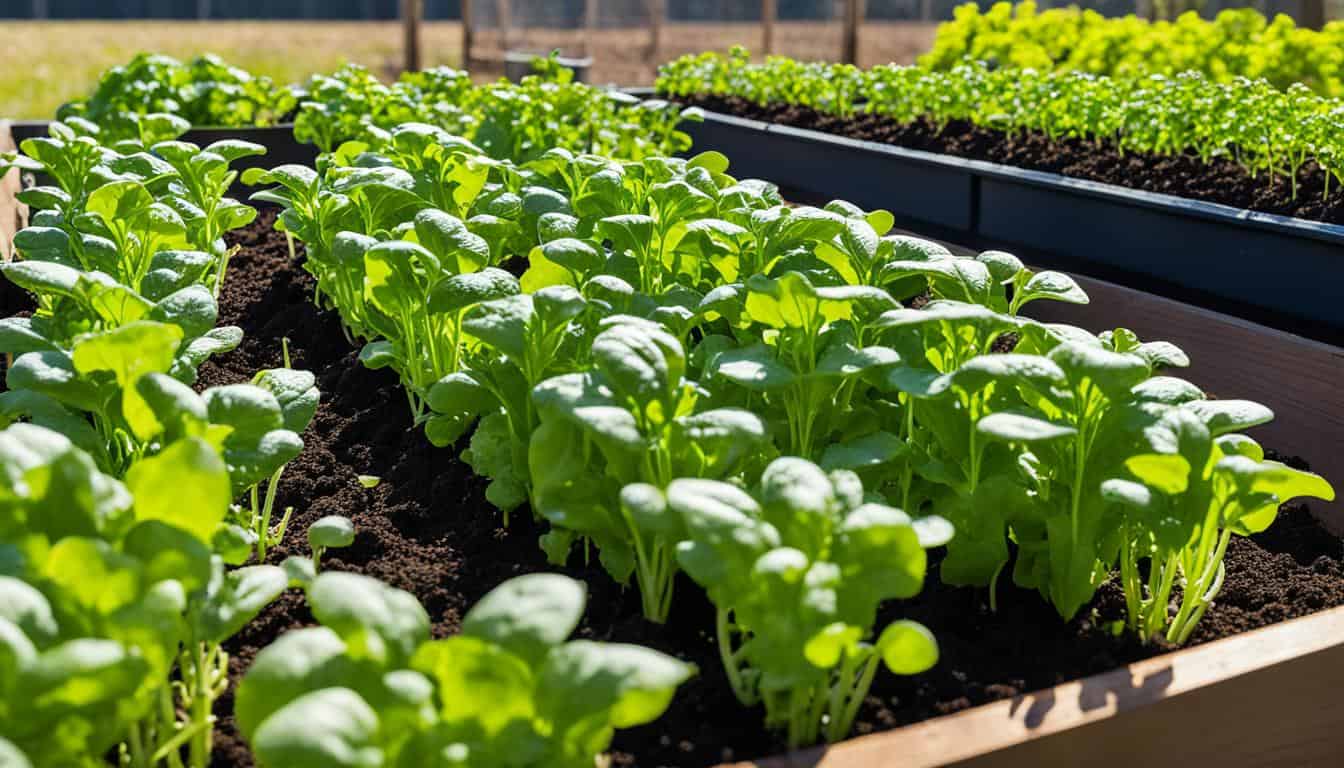
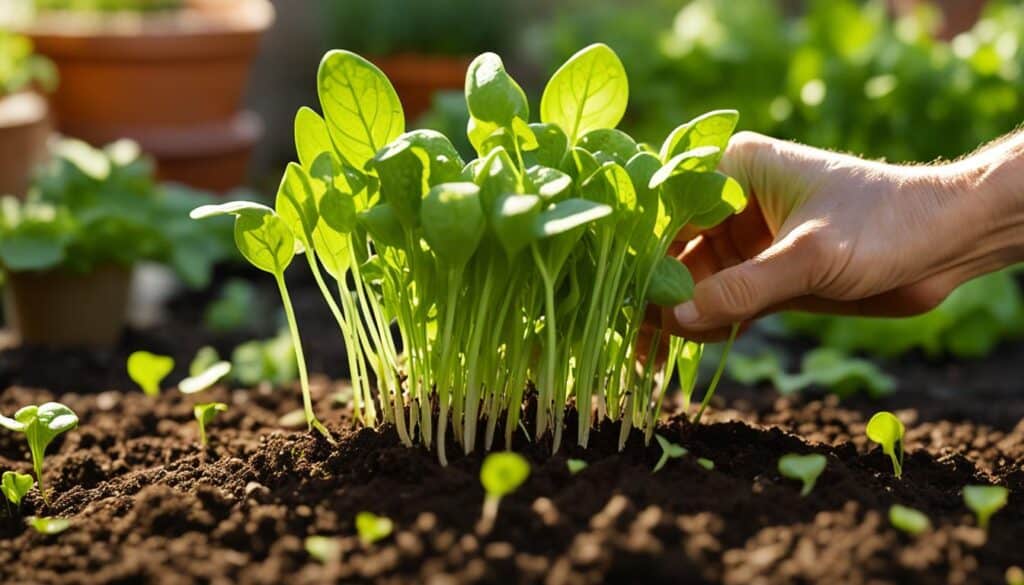
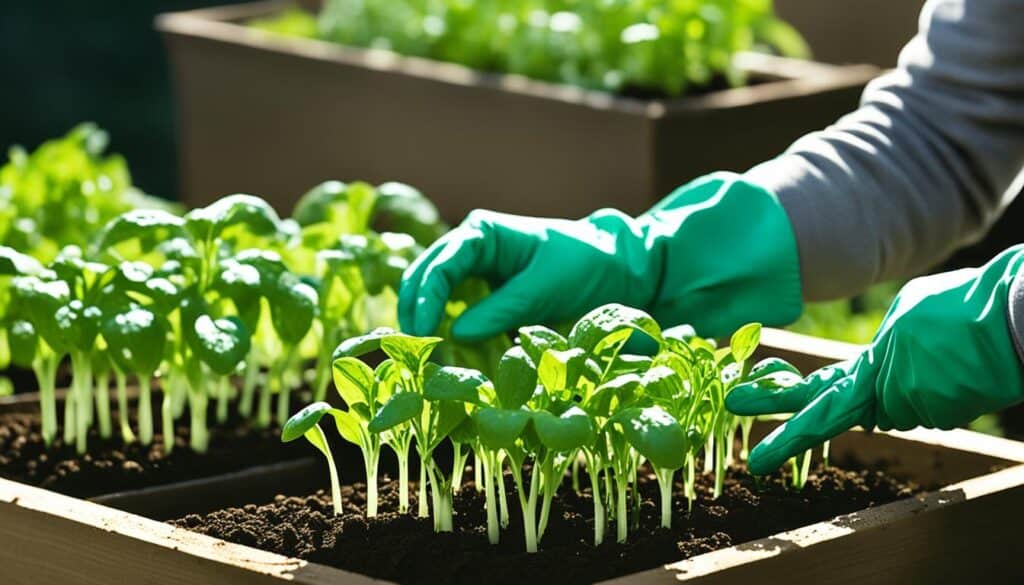
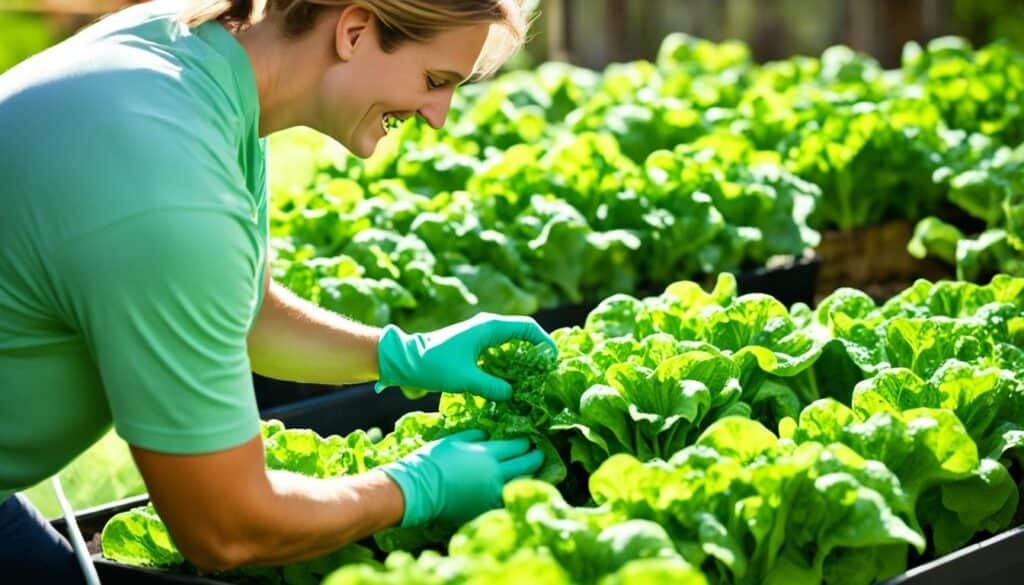

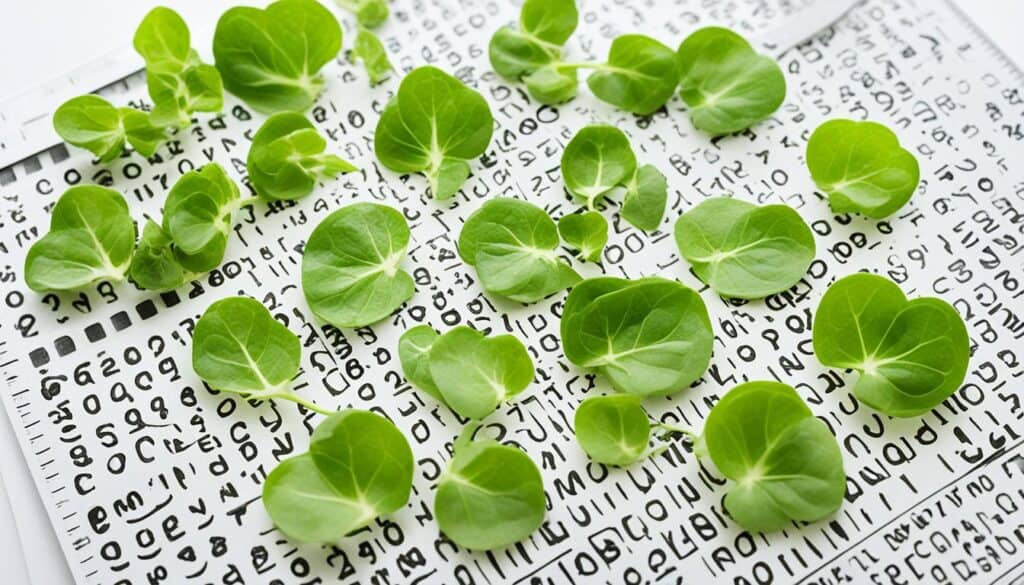



Leave a Reply